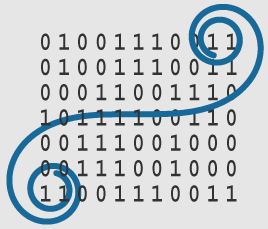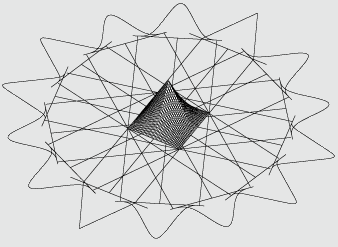CONTENTS
About me
News
Research
Publications
Programming
Teaching
Links
Research
Current Research
Please visit my up to date pages to find out about my current research projects.
Numerical Reconstructions from Digital Holograms
and Related Inverse Problems (Thesis advisor: Prof. M. Unser)
Digital holography is an imaging method in which a hologram is recorded
using a CCD camera (instead of a photographic plate in traditional holography)
and reconstructed numerically.
Precise and quantitative measurements of an object's physical properties are possible
(reflectivity, absorption, topography, refractive index map, etc.). The applications
of digital holography are numerous. Since it is a non-invasive method, it
it is particularly indicated for imaging living, biological samples.
Starting from the optically acquired and digitized holograms, the challenges are to develop
new methods for the high quality image reconstruction of several of the object's properties.
The presence of noise or
imperfect optical elements, limited storage capacity and computational complexity are some of the faced constraints.
The newly proposed methods should also allow to relax the requirements
on the acquisition setups that are often by some algorithms.
The project is carried out in collaboration with the research groups of Prof. R. Salathé and Dr Ch. Depeursinge
(IOA, STI, EPFL) and Prof. P. Magistretti (UNIL, IP). Part of this collaboration took place under the joint project in
biomedical engineering of HUG / UNIL / EPFL / UNIGE / HCV: Microdiag.
Have a look at our publications and my Ph.D. dissertation abstract.

Computerized Tomography
Computerized tomography (CT) is a non-invasive imaging technique that allows to examine slices
of the human body without damaging it.
The human body is X-rayed from several angles, producing a set of X-ray projections, the so-called sinogram.
Each sinogram column corresponds to the X-ray projection at one angle.
Computerized tomographic reconstruction calculates from this set of 1D sinogram lines a
reconstructed 2D image, a slice through the internal structure of the examined body.
We compared in detail several CT image reconstruction techniques. The main contributions are the implementation
and extension of the standard filtered backprojection algorithm by using splines and least-squares approximation
within the general framework of Hilbert spaces and spline bases.
Have a look at my diploma project,
Java demo and
publications.

Picture above is a Spline flower. Find out how it was grown here.
